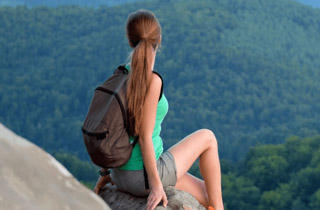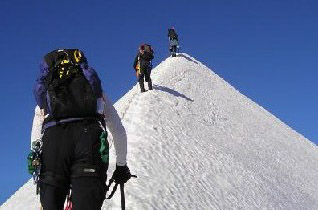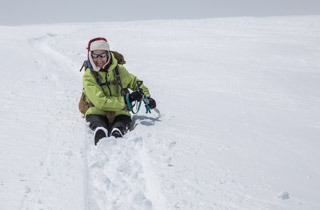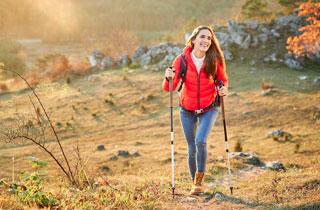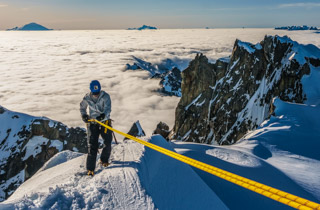Knee Strength for Mountain Travel
Knee Strength for Mountain Travel
Reverse Step Ups for Strong Knees
If you experience discomfort in your knees, particularly going down hills or stairs, you may have a muscle imbalance between the vastus lateralis and vastus medialis obliquus (VMO) quadriceps muscles, quad-hamstring ratio, ankle issues, or issues in your hips.

There are several things you can try, including strengthening all the muscles around your knees. An exercise we recommend trying is the VMO Reverse Step-up pictured above and demonstrated in the video below.
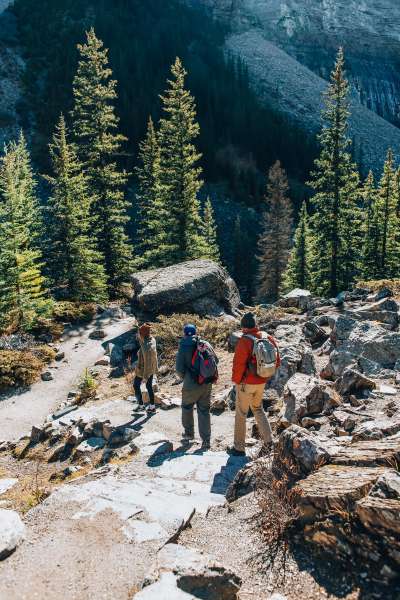
Exercise Performance
Place a sturdy box, bench, or step about 6-10 inches high in front of a mirror and stand behind the bench facing it. Place the foot of your weaker or non-dominant leg on the bench, with the toes slightly turned out at about 10 degrees. Now, keeping your hips and shoulders square to the front, and arms on your hips or in front of you for counterbalance, slowly lift yourself up on the elevated leg without pushing or rebounding off the floor. Watch what your knee does in the mirror, especially as you slowly lower back down to the floor.
If your knee is very wobbly, if it buckles in toward the midline of your body, or if you pitch to one side without being able to balance, then lower the step height by 1-2 inches and try again. You can do this forward step-up as a strengthening exercise for the glutes and hamstrings, or go on to the exercise pictured below to target the VMO.
Why This Exercise?
The Reverse Step-Up has direct application to hiking or climbing down stairs, hills, and mountains. Select a step height that works for you without excessive knee wobbling. Start in front of the step, on the floor, facing away from the step, with toes that are up on the step turned out about 5-10 degrees. Slowly step backward and onto the step, lifting on your toes and allowing the heel to return to the step, making sure the leg on the step is doing the lifting without pushing off with the leg on the floor. Then reverse the movement and slowly lower back to the floor.
The video segment featured here provides a demonstration of how to do this slowly and under control. Repeat for the desired number of repetitions. On each repetition, try to mentally force your knee to stay tracking right above your middle toe and slightly press outward rather than allowing it to collapse in toward the midline of the body. Perform this exercise 2-3 times a week, 2-3 sets of 10-12 repetitions, taking 2 seconds to lift and 2 seconds to lower.
Make sure you are warmed up first. Very often the second and third sets will feel much more stable as the legs get warmed up and familiar with the exercise. Single-limb exercises such as this, step-ups, walking lunges, and single-leg squats will do wonders for your balance and also strengthen all the smaller muscles in your ankles and the larger muscles around the knees and hips.


